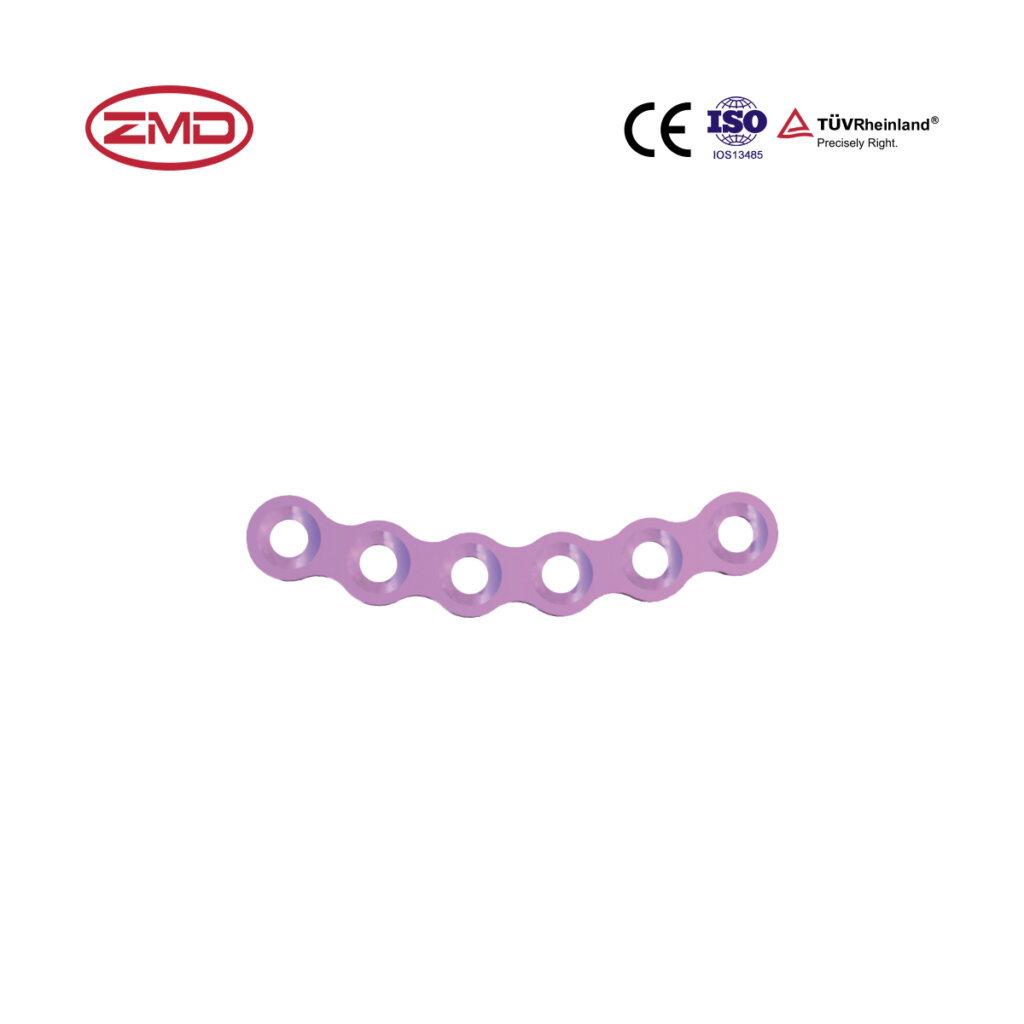
- Home
- About Us
- Products
- Trauma Internal Fixation System
- Spinal Internal Fixation System
- External Fixation
- Artificial Implants System
- Sports Medicine
- Power tools
- VSD System
- Instruments
- Medical supplies
- Blog
- Personnel Profile
- Contact Us
Phone line
1.Unique Hook Design: The integrated hook design provides exceptional stability and support for bone fragments, especially in complex fractures.
2.Enhanced Structural Integrity: The increased thickness of 1.0mm provides superior strength and stability compared to thinner options, ensuring reliable bone fixation.
3.Minimal Invasive Profile: While offering enhanced strength, the plate maintains a low profile, minimizing tissue disruption and accelerating patient recovery.
4.Versatility: The hook design offers adaptability to various bone configurations, making it suitable for a wide range of surgical procedures.
5.Superior Material: Crafted from high-grade titanium, the plate offers exceptional strength, biocompatibility, and resistance to corrosion.
| Code | Product name | Size | Related Screwdriver |
| 5213.0426 | Hook Plate 2.0mm | 5 Holes 20*13mm | 2.0mm |
Key Features and Benefits of the Hook Plate 2.0mm
The Hook Plate 2.0mm T: 1.0mm offers exceptional strength, stability, and versatility for complex bone reconstructions. Its innovative hook design provides secure fixation and prevents implant migration, while the increased thickness ensures durability and reliability. This plate is ideal for challenging fractures and osteotomy procedures, offering precise bone alignment and promoting optimal healing.
Indications for Hook Plate 2.0mm
The Hook Plate 2.0mm T: 1.0mm is indicated for a variety of orthopedic and maxillofacial surgical procedures requiring enhanced stability and support, particularly in areas with bone fragment displacement or avulsion fractures. Key indications include:
How a Hook Plate 2.0mm Works
The Hook Plate 2.0mm T: 1.0mm is designed to provide exceptional stability and support for complex fractures and bone reconstructions. The integrated hook design effectively engages and secures bone fragments, preventing displacement and promoting optimal healing. The plate is secured to the bone using screws, creating a robust framework. The 2.0mm width and 1.0mm thickness offer a balance of strength and minimal invasiveness, reducing surgical trauma and accelerating recovery. By combining the strength of the plate with the secure grip of the hooks, this implant provides reliable fixation and facilitates bone union.
FAQ
Q1: What is a Hook Plate?
A Hook Plate is a medical implant designed with integrated hooks for enhanced stability and support in bone fractures, particularly those involving bone fragment displacement.
Q2: What do the numbers “2.0mm T: 1.0mm” signify in the plate?
The “2.0mm” refers to the width of the plate, while “T: 1.0mm” indicates the thickness of the plate.
Q3: What material is typically used for Hook Plates?
Hook Plates are commonly made from titanium due to its biocompatibility, strength, and resistance to corrosion.
Q4: What are the primary applications of a Hook Plate?
Hook Plates are used in orthopedic surgery for fracture fixation, especially in cases involving bone fragment displacement or avulsion fractures.
Q5: How is the Hook Plate secured to the bone?
The Hook Plate is typically secured to the bone using screws designed for this purpose. These screws are inserted through pre-drilled holes in the plate and into the bone.
Q6: What are the advantages of using a Hook Plate compared to other plate designs?
Hook Plates offer superior stability and prevent bone fragment displacement, making them ideal for complex fractures.
Q7: Is the Hook Plate a permanent implant?
In most cases, the Hook Plate is designed as a permanent implant to provide long-term support and stability to the bone. Removal is typically considered only in specific circumstances.
Q8: Can the Hook Plate be customized to fit specific patient anatomy?
While standard sizes are available, some manufacturers may offer customization options to fit specific patient anatomy and surgical requirements.
Q9: What is the typical recovery time after surgery involving a Hook Plate?
Recovery time varies depending on the severity of the fracture, the patient’s overall health, and other factors. However, the use of a thicker plate can contribute to increased stability and potentially faster healing.
Q10: Are there any risks associated with using a Hook Plate?
As with any surgical procedure, there are potential risks such as infection, implant failure, or allergic reactions. However, these risks are generally low when the implant is used correctly and post-operative care is followed.
Oh yeah! I have to mention their payment options and discount offers, which are awesome! Those payment methods are as flexible as moving water and can be chosen freely according to our cash flow situation. And the frequent discounts, like a timely rain, have been moisturizing our financial statements time and again, and have had a rocket-like positive impact on our profits! With ZMD, I feel relaxed and at ease when it comes to purchasing!
Send us a message if you have any questions or request a quote. Our experts will give you a reply within 24 hours and help you select the right valve you want.
Book Now
If you are looking for professional orthopedic medical product solutions, don’t hesitate to contact us now!

We are an integrated manufacturer specializing in orthopedic medical industry, providing high quality and reliable orthopedic medical products to customers worldwide.
Copyright © 2024 ASK Project